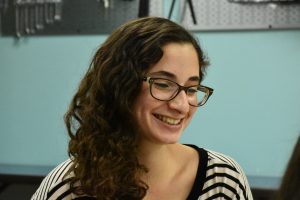Noam Shemer is a first-year student in the Division of Occupational Science and Occupational Therapy who was drawn to the field because of her experiences with sensory issues as a child.
Having grown up in a small town, Shemer explained that she faced more difficulty than her peers while playing on a community playground that was a central location for people to come together and socialize.
Shemer worked with an occupational therapist to overcome these sensory obstacles. Together, they built a model playground in therapy to help familiarize her with a similar, but more comfortable, environment.

“Of course I didn’t know it was therapy,” Shemer said. “I thought it was just an adult woman playing games and things like that with me.”
Experiencing occupational therapy as a child laid the foundation for Shemer’s interest in the profession. Although Shemer might not have been aware of sensory issues she experienced at such a young age, occupational therapy enabled her to experience the joys of playing with other children.
“As I grew older, I realized I was so fascinated with people of all ages and the problems that they navigate in their lives and overcoming those obstacles presented by their environments,” Shemer said.
This fascination is what fueled Shemer’s passion to become both an occupational therapist and an advocate for the profession. She believes health science professionals have opportunities for the impact of their work to go beyond individual clients and also affect the health care and education systems.
“OTs ask not ‘what’s the matter with you’ but ‘what matters to you?'” Shemer said. “What’s unique to OTs is, first of all, seeing the connections between all of these different part’s of a person’s life.”
Shemer said she’s considering working with refugees and immigrants to the United States.
“I’ve worked a lot with non-native English-speakers through tutoring and teaching. That is a population that I specifically want to work with because I don’t think they have the same access to health care and to therapy as is available to other parts of the population.”
Shemer said she appreciates the interdisciplinary nature of the OT program. Already, she has worked with students in medicine and audiology, among other professions, in order to understand every aspect of a patient’s health and well-being. This interdisciplinary work is preparing her for success in working with other disciplines to accomplish her advocacy goals.
The division is is one of seven housed in the Department of Allied Health Sciences in UNC’s School of Medicine.
-Brooke Love, Communications Intern